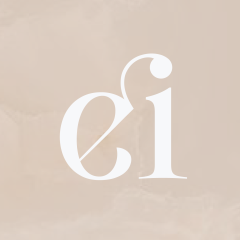11 February 2022 / ERIKAFUKASAWA
Style and Period:
The standardization of visual form through simple, concrete and rational information, eliminating any type of visual interference, with the aim of being universally understood, were the characteristics of the modernist artistic movement called the International Style. (Diogo Terror, 2009)
Characteristics:
The Swiss manipulate typefaces just as they do with basic shapes, giving rise to great compositions where you see the full personality of the fonts without missing a photo or artwork for the design in question.
Asymmetric organization of design elements in a mathematically constructed grid, objective photography and text with clear and factual visual and verbal information.
The initiators of the movement believed that sans serif typography expresses the spirit of a more progressive era and that mathematical grid are the most readable and harmonious means of structuring information. (Callie Budrick – Swiss Style 2020)
Colour, Theme and Typify:
Large corporations used the new utilitarian design in their goods and corporate identities. Everything that wasn’t required for the product to work was removed. Its design ideas stress clean lines, form balance, and readability. Graphic cages that define asymmetrical layouts, sans serif typefaces, rigorous mathematical forms, and the usage of photos over illustration are used to achieve these results. (Darth Vader, 2022)
The main practitioners:
- Josef Muller-Brockmann got popular for making the use of grids within design.
- Adrian Johann Frutiger was a Swiss typeface designer.
- Ernst Keller was teacher and pioneer of the Swiss Style.
- Armin Hofmann was a graphic designer. His work is recognized for its reliance on the fundamental elements of graphic form – point, line, and shape – while subtly conveying simplicity, complexity, representation, and abstraction. (MoMA 2022)
- Jan Tschichold organised most of the modernist design principles.
Contemporary Design or Designers:
Kati Forner has worked in print, digital, packaging, and interactive design, and her work is beautiful and minimalist. She relocated her creative studio to Los Angeles five years ago and has been building identities for beauty, fashion, and lifestyle firms ever since. “Design has the capacity to communicate stories, increase engagement, alter companies, and build a business,” the firm thinks. (Jacque Ostrom, 2019)
Kati’s branding and package design for Muse + Metta Kombucha is perfect for expressing an aspirational lifestyle; it appears strong, yet the lightness and effervescence are palpable. The cool colours she lends to each flavour are so varied and beautiful. (Jacque Ostrom, 2019)
Reference list:
- Alex Bigman – What exactly is Swiss Design, anyway? (2017) [online] 99designs.ie Available at: <https://99designs.ie/blog/design-history-movements/swiss-design/> [Accessed 11 February]
- Callie Budrick – Swiss Style: The Principles, the Typefaces & the Designers (2020) [online] printmag.com Available at:<https://www.printmag.com/featured/swiss-style-principles-typefaces-designers/> [Accessed 11 February]
- Darth Vader – 11 Contemporary Projects Influenced by Swiss Style Design (2022) [online] design.tutsplus.com Available at: <https://www.hipsthetic.com/11-contemporary-projects-influenced-by-swiss-style-design/> [Accessed 11 February]
- Design – Swiss Style web design: Everything you need to know (2018) [online] justinmind.com Available at: <https://www.justinmind.com/blog/swiss-style-web-design-everything-you-need-to-know/> [Accessed 11 February]
- Diogo Terror – Lessons From Swiss Style Graphic Design (2009) [online] smashingmagazine.com Available at:<https://www.smashingmagazine.com/2009/07/lessons-from-swiss-style-graphic-design/> [Accessed 11 February]
- Flux – Inspiration Weekly: Swiss Design (2021) [online] youtube.com, Available at: <https://www.youtube.com/watch?v=gFBU40p6vrw> [Accessed 11 February]
- Intrigano – The objectivity of Swiss Design (2018) [online] youtube.com, Available at: <https://www.youtube.com/watch?v=GZAjFbnJ40Q> [Accessed 11 February]
- Jacque Ostrom – Creative inspiration: Kati Forner (2019) [online] shillingtoneducation.com, Available at: <https://www.shillingtoneducation.com/blog/kati-forner/> [Accessed 11 February]
- Kati Forner Design, (2022) [online] behance.com Available at: <https://www.behance.net/kmf?tracking_source=search_users|kati%20forner> [Accessed 11 February]
- Laura Keung – What Is Swiss Design and Why You Should Know Its History (2021) [online] design.tutsplus.com Available at: <https://design.tutsplus.com/articles/what-is-swiss-design-and-why-you-should-know-its-history–cms-38463> [Accessed 11 February]
- MoMA – The museum of Modern Art (2022) [online] moma.org Available at: <https://www.moma.org/artists/2697> [Accessed 11 February]
- Sara Jacobsen – DH – Design History (2018) [online] sarajacobsendesign.no, Available at: <http://sarajacobsendesign.no/Swiss.html> [Accessed 11 February]
Pictography:
- Figure 1 – Josef Müller-Brockmann [image] Available at:<https://visualartsdepartment.wordpress.com/swiss/> [Accessed 11 February]
- Figure 2 & 3 – Geometric and Proportion Swiss Style images [image] Available at:<https://inspirationfeed.com/swiss-graphic-design/>[Accessed 11 February]
- Figure 4 – Beethoven Poster, Josef Müller-Brockmann, 1955[image] Available at:<https://www.printmag.com/featured/swiss-style-principles-typefaces-designers/> [Accessed 11 February]
- Figure 5 – Adrian Frutiger – Universe Typeface [image] Available at:<https://www.famousgraphicdesigners.org/adrian-frutiger> [Accessed 11 February]
- Figure 6 – Ernst Keller images [image] Available at:<https://commons.wikimedia.org/wiki/File:Ernst_keller_image.jpg> [Accessed 11 February]
- Figure 7 – Armin HofmannM B Co Zurich [image] Available at:<http://luc.devroye.org/fonts-48901.html> [Accessed 11 February]
- Figure 8, 9, 10, 11, 12 & 13 (2022) [image] Available at:<https://www.behance.net/kmf?tracking_source=search_users%7Ckati%20forner> [Accessed 11 February]













